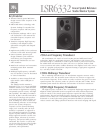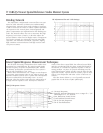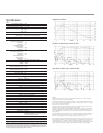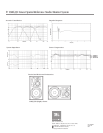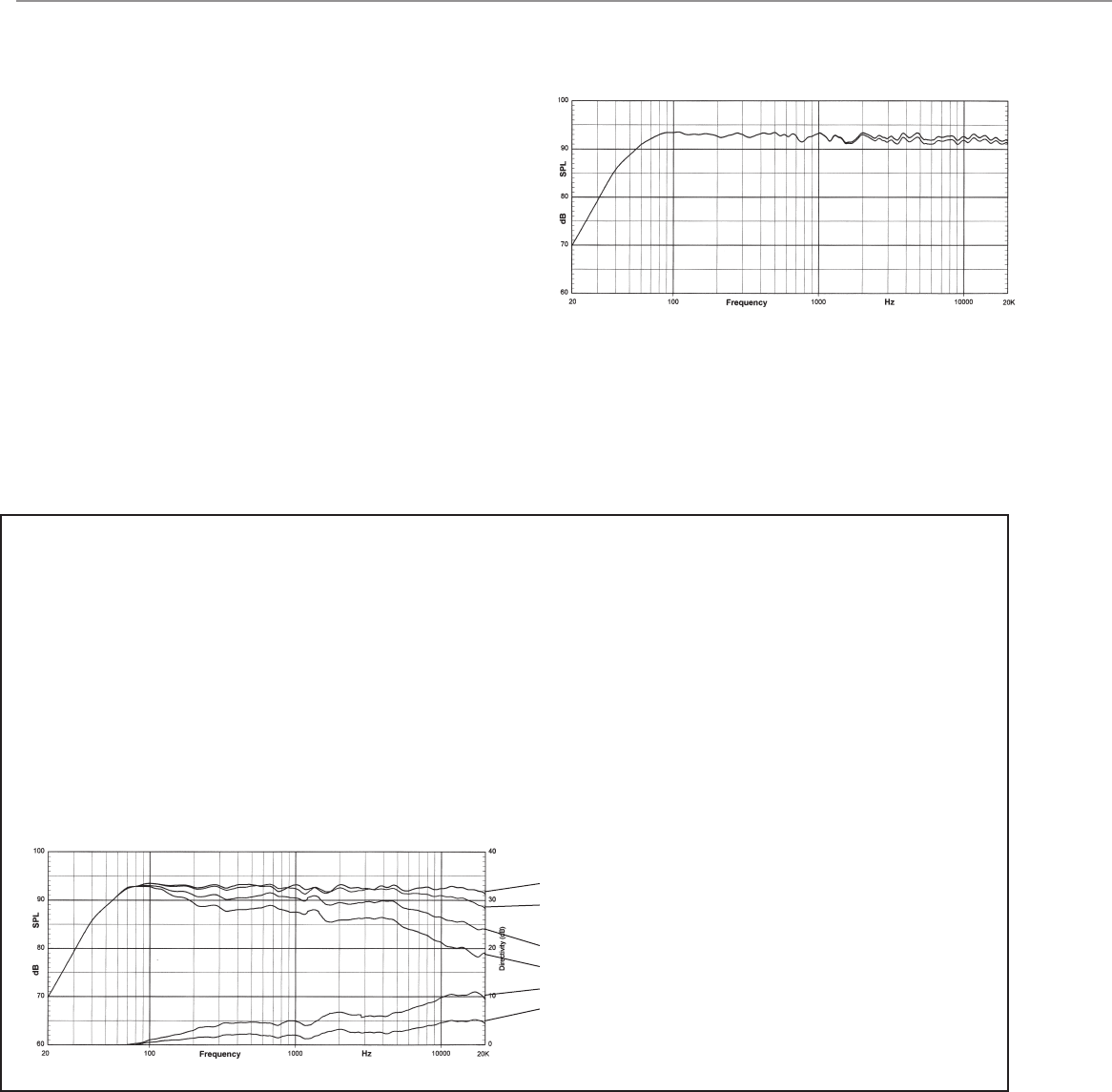
᭤ LSR6332 Linear Spatial Reference Studio Monitor System
Dividing Network
The impedance compensated crossover filters are opti-
mized to yield 4th-order (24 dB/octave) Linkwitz-Riley
electroacoustic responses from each transducer (in-phase,
-6 dB at crossover). In order to achieve optimal symmetri-
cal response in the vertical plane, both magnitude and
phase compensation are implemented in the dividing net-
work. The network allows the user to attenuate the high
frequency level above 3 kHz by 1 dB. This adjusts for
spectral balance when used in bright rooms. Components
used in the network are exclusively low-loss metal film
capacitors, low distortion electrolytic capacitors, high-Q
high saturation current inductors and high current sand-
cast power resistors.t
HF Adjustment Flat and -1 dB Settings
We all know that many loudspeakers have similar mea-
surements but sound different. By going beyond simple
on-axis frequency response measurements, JBL defines
the ultimate performance specification for new systems –
what it will sound like in your room.
While other manufacturers use a single on-axis frequen-
cy response measurement taken at one point in space, JBL
measures monitor systems over a sphere that encompasses
all power radiated into the listening room – in every
direction. This data reflects 1296 times the information of
a single on-axis response curve. Seventy-two measure-
LSR6332 Response Curves
1. On-Axis Response
2. Spatially Averaged Response over a range of +/- 30°
Horizontal & +/- 15° Vertical
3. First Reflection Sound Power
4. Total Radiated Sound Power
5. DI of On-Axis Response
6. DI of First Reflections
ments of the direct sound field, the reflected sound field,
and the reverberant field, the entire sound field heard by
the listener, is correlated to optimize response at the lis-
tening position. In place of spectral smoothing used by
some manufacturers which actually conceals data, the JBL
approach actually exposes flaws in systems, such as reso-
nances, poor dispersion and other causes of off-axis col-
oration.
The data shown below is a set of spatially measured
graphs that are the heart of JBL’s philosophy.
Linear Spatial Response Measurement Techniques



